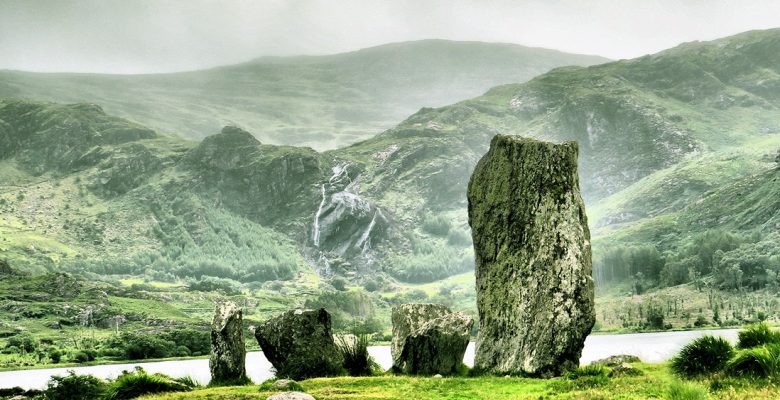The Celtic Seasonal Ceremonies
The Celtic year is punctuated with eight sacred festivals marking the progression of the year (and plenty of opportunity for celebration) – Samhain, Winter Solstice, Imbolc, Spring Equinox, Beltaine, Summer Solstice, Lughnasa, Autumn Equinox. The four seasonal festivals of Samain, Imbolc, Beltaine and Lughnasa are concerned with the cycles of Mother Nature as the seasons change. Between each seasonal festival is a cosmic festival marking the movement of the planet around the sun; the Summer and Winter Solstices and the Spring and Autumn Equinox’s.
October: Samhain-Sunday 29 October 2023 11am-6pm
Includes Samhain ceremony, spirit boat, celtic new year, despacho, Tara ceremony
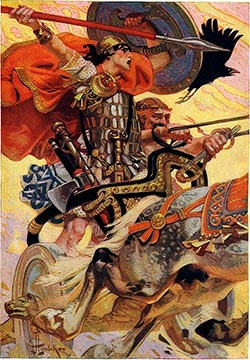
Samhain (pronounced “sow-wain”) means “End of Summer” (sam, summer; fuin, end). Samhain is one of the four seasonal celebrations of the Celts. The others are Beltaine (1 May), Imbolc (1 February), and Lughnasa (1 August). In Wales it is called Hollantide, in Cornwall it is called Allantide, and in Brittany it is called Kala-Goañv. The oldest written reference is to Samonios in the Coligny calendar from Brittany in 100BC. The Christian versions are All Saints’ Day and Halloween. It is often held to be the start of the Celtic New Year.
It is one of the two “spirit-nights” each year, the other being Beltane, when the veils between the worlds are thinnest. Communicating with ancestors and departed loved ones is easy at this time. Originally the “Feast of the Dead” was celebrated in Celtic countries by leaving food offerings on altars and doorsteps for the spirits of the ancestors.
Samhain is not only a time for reflecting on mortality, but also on the passing of relationships, jobs and other significant changes in life. It is a time for taking stock of the past and coming to terms with it, in order to move on and look forward to the future.
The Mound of the Hostages, a Neolithic passage tomb on the Hill of Tara, is aligned with the Samhain sunrise.
To celebrate Samhain bonfires are lit. Traditionally people brought harvest food and sacrificed animals to share a communal dinner in celebration of the festival. This was the time that the cattle and other livestock were slaughtered for eating in the ensuing winter months. Any crops still in the field on Samhain were left as offerings to the Nature spirits. Hearth fires were also lit from the village bonfire, and the ashes were spread over the harvested fields to protect and bless the land.
In ancient times each of the Irish five provinces sent groups to Tara every three years for a Samhain festival. Each year at Tlachtga the lighting of the winter fires was a key part of the Samhain ceremony and we participate in the modern revival of this ancient custom.
In part Samhain ceremonies also recall the Dagda‘s sacred sexual encounters with three divinities, the Mórrígan, Boand, and Indech‘s unnamed daughter. The Morrigan appears as a crow in the painting of Cu CuAs a result, Samain is thought the best time for a woman to become pregnant.
Later, when the festival was adopted by Christians, they celebrated it as All Hallows’ Eve, followed by All Saints Day, though it still retained elements of remembering and honouring the dead. It is also celebrated as Halloween.
In Cork and Kildare a procession of men blowing horns would be led by someone called “the White Mare”, who would wear white robes and the configuration of a horse’s head. This tradition persisted until the 1950’s.
Keeping to the ancient ways of Samhain
Today you can still carry on the ancient ways. Light a candle in a window to help guide the spirits of ancestors and loved ones home. Put an extra chair at the dinner table and around the hearth (or TV) for the unseen guest. You can bury apples along roadsides and paths for spirits who are lost or have no descendants to provide for them.
August: Lughnasa
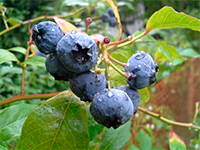
Lughnasa can also be spelt Lugnasad, Lughnasadh, and Lúnasa. It is also known as Lammas Day, Garland Sunday, Domhnach Chrom Dubh, and Bilberry Sunday.
Lughnasa is primarily a harvest festival celebrating the ripening of the crops. The festival was established by Lug as funeral games in honour of his foster-mother, Tailtiu in Brega, Co. Meath with contests of chariot racing and wrestling. She was said to have died of exhaustion clearing the forests of Ireland for farming. Later Lughnasa celebrations expanded to other parts of the country and to include additional events, such as bardic poetry and music contests. This was also the time for retelling or re-enacting the events of Lug’s life.
Trial marriages could be arranged at these festivals. In these couples joined hands through a hole in a door. The trial marriage lasted a year and a day, and so could be confirmed as permanent or broken without consequence at the next Lughnasa festival.
Keeping to the ancient ways of Lughnasa
It is traditional to share bread made from the first grains harvested and the apples of the season at Lughnasa. Slice some apple or freshly made bread and pass it around in a circle. Each person takes a slice and passes it to their left (clockwise). As they pass it to their neighbour, they say “I offer you the first fruits of the harvest, share them with me in fellowship, and let us together thank nature for this bounty.”
January: Imbolc – Brigid’s Day
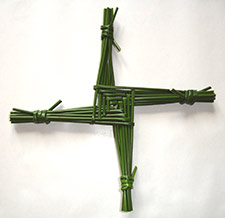
Imbolc is associated with the Celtic fire-goddess, Brigit. Under Christianity she became St Brigid of Kildare, and the festival became known as St Brigid’s Day. Despite the growth of many Christian stories about her life, there was never any historical figure behind these myths.
Brigit is the Celtic goddess of fire, smithing, fertility, cattle, crops, and poetry. She was daughter of the Dagda (one of the leaders of the Tuatha Dé Danann) and Goddess of Leinster.
Traditionally, Brigid’s crosses are made at this time as well as a doll figurine of the goddess, called a Brídeóg. Brigid was said to visit one’s home at Imbolc. Until the 1950’s children would carry the Brídeóg from house to house (and get treats in return). People would make a bed for Brigid and leave her food and drink, while items of clothing would be left outside for her to bless. It was said that if the clothes were wet in the morning, she had blessed them. Brigid was also invoked to protect homes and livestock, though she was said not to bless all, only those who most needed it. It was also a good time for purification at holy wells and for divination.
The Mound of the Hostages on the Hill of Tara is aligned with the rising sun at Imbolc and Samain.
We celebrate Imbolc with fire and despacho ceremony, playing music, telling the stories and letting the kids go a little wild.
Keeping to the ancient ways of Imbolc
You can celebrate Imbolc by making Brigid’s crosses and hanging them outside your door. Leave some food out for Brigid in the hope she will bless your house. Leave an item of clothing on a hawthorn hedge overnight. Wear it to recieve her blessing.
May: Beltaine
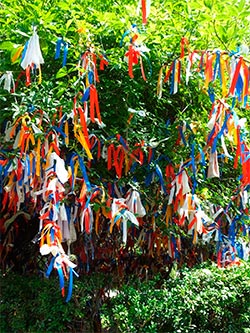
Beltaine is also known as Cétshamain in Ireland, Cyntefin and Dydd Calan Mai in Wales, as Cala’ Mē in Cornwall, and Kala-Hañv in Brittany.
Beltaine marks the beginning of summer and the time when cattle were driven out to the summer pastures. Rituals were performed to protect the cattle, crops and people, and to encourage growth. Special bonfires were kindled, and their flames, smoke and ashes were deemed to have protective powers. Traditionally two bonfires are built on Beltaine and the cattle driven between them to prevent disease over the coming year. Beltaine is a time for the ritual eating of Beltaine cakes made from oats or barley.
Doors, windows, and even the cattle themselves would be decorated with May flower. People would make a May Bush: a hawthorn bush decorated with flowers, ribbons and bright shells. Household May Bushes would be outside each house, while communal May Bushes which would be in a public spot and decorated by the whole community. The aim was to bring the blessings of the spirit of the tree. In Dublin and Belfast, May Bushes were brought into town from the countryside and decorated by the whole neighbourhood. Making May Bushes was banned in the 1800’s.
The first water drawn from a well on Beltane was seen as being especially potent, as was Beltane morning dew. At dawn on Beltane, women would wash their faces with Beltaine dew. The dew was thought to increase sexual attractiveness, maintain youthfulness, and help with skin ailments. Hearth fires would be extinguished and relit to start a new summer with fresh fire.
Beltain was considered the time for getting into “right relationship” with the fairy folk. Cattle would be brought to ‘fairy forts’, where a small amount of their blood would be collected. The owners would then pour it into the earth with prayers for the herd’s safety. Sometimes the blood would be left to dry and then burnt.
Keeping to the ancient ways of Beltaine.
You can decorate your own Beltaine bush in your own home. Decorating the bush will bring the blessing of the spirit of that being to your life.
Shamanic training courses at Green Tara College
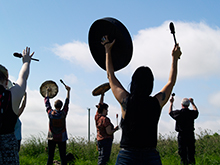 The starting point for all our shamanic training is the Foundation in Shamanism
The starting point for all our shamanic training is the Foundation in Shamanism
https://www.greentara.ie/zoom-shamanism/
The program is as follows:
- Foundation in Shamanism – this provides the basic skills. Details are below. This course is 2 hours per week, every Tuesday. [more details]
- Intermediate Shamanism – this is a 6-month course, 2 hours per week, every Thursday. Intermediate Shamanic training assumes certain key shamanic skills, taught in the Foundation in Shamanism course. However, if you already have those, you can enter this course directly, or take Foundation in Shamanism at the same time. The main focus is building your psychic power and a number of empowering initiations from the Q’ero tradition (Peru). [more details]
- Shamanic Practitioner – This is a 1-year course, with an optional second year for advanced work. This course assumes the skills developed in the previous classes and will focus on working with clients. We do not think someone can do this safely without the skills and training from the previous courses, though people can acquire those skills elsewhere – we are not requiring they have attended our classes, only that they are ready for the heavy-duty work of healing others. [more details]

